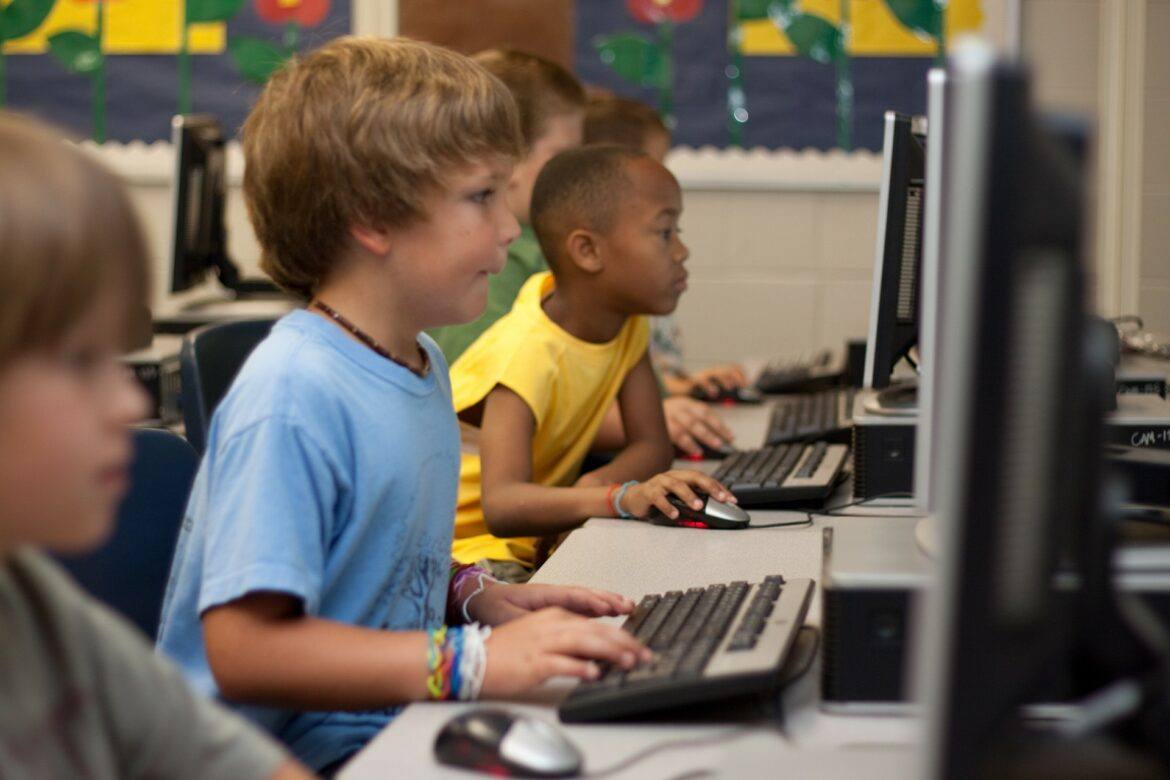In today’s world, much of our society happens online. It’s where people socialize, share ideas, and debate. However, it also isn’t without potential dangers. Extremist groups recruit online. Cyberspace has been added to land, air, and sea as the fourth arena of warfare. Just as we teach students how to be safe and healthy and to be good citizens in the real world, we now need to help them develop online life skills.
Keeping Ahead of the Curve
There is so much technology developing so fast that it can seem daunting to keep up. As soon as we’ve figured out one platform students love, they’re on to the next. The revelations about social media sites, privacy, security, and data collection come at such a dizzying pace that it is hard for most adults to put on their own digital oxygen masks, much less help the child next to them.
Fortunately, the technology itself is mostly irrelevant for providing students with the foundation they need to develop digital resilience and be good digital citizens. And it isn’t that different from what we’ve been teaching them all along for succeeding in life.
Developing Digital Resilience
Digital resilience is the technical, emotional, and critical thinking skills students (and educators) need to enjoy the benefits of the internet while still spotting the dangers and managing the risks.
Let’s start by taking a look at the potential risks students may encounter online. They could stumble upon or have risky content shared by others on their social media feeds. This content could include violent or pornographic imagery or pro-suicide or pro-anorexia. They are open to grooming by sexual predators, recruitment by extremist groups, stalking, and bullying. Like adults, they can be subject to identity theft, phishing, and accidentally downloading malicious code.
Keep Things Private
Kids are so adept at snapping, tweeting, posting, commenting, and hashtagging that it may seem they have the technical skills to manage their safety online. But they may not know how, or think to block an online harasser. They may not be checking their privacy or location settings.
A good conversation to have around a popular social platform is “What are the privacy settings? What information am I sharing that I don’t realize I’m sharing? Who is able to see what I’m sharing? Who may be watching me online?”
Keep Communication Open
Kids face the same emotional challenges online that they face on the playground or in the cafeteria. And they tend to have a stronger reaction to online harassment than real life incidents. They also tend to feel more ashamed of and hide online harassment. If you impart just one message to your students about their online lives, encourage them to seek support and help from an adult if they have any online interaction that makes them uncomfortable.
Make Vetting Online Content a Teachable Moment
In this age of doctored photos, fake videos, memes, misinformation, disinformation, and online trolls, each of us needs to sharpen our critical thinking skills on online content. This is really just a fresh source for examples on fact vs. opinion, point of view, and evaluating the source of information. One challenge with using actual content your students have encountered online is it may contain sensitive material. It would be wise to address this with your administration.
Digital Citizenship
The other side of the online coin is digital citizenship. As we teach students about being a good citizen in their real-life communities, it is time to extend those lessons and discussions to include what a good citizen does online.
Be Kind
Just like in real life, good digital citizens don’t bully. They are polite. They think about how their words make the other person feel. People of all ages tend to quickly sink to rude and bullying exchanges online that they wouldn’t in person. Let’s teach our students to think about the person behind that profile picture.
Be a Leader
Good digital citizens are leaders online. They vet information before they share it. They avoid sharing junk information like memes. They lead by example in how they engage with others and refuse to be baited into name-calling.
Be Careful of Your Digital Footprint
Students also need to think about their permanent online record and how the way they engage online now could impact a future job or other opportunities. There is a saying “The internet never forgets.” Even if you delete something, you never know who downloaded it or took a screenshot. With internet archive tools like the Way Back Machine, everything that has ever been posted online is archived and retrievable.
When thinking about how to help your students develop their digital resilience and digital citizenship skills, look to the lessons you are already teaching on emotional resilience, critical thinking, and personal safety. Incorporate examples and discussion of what these things look like online.
More Resources to Teach These Skills
- DigCitUtah provides lesson plans on digital citizenship for grades K -12.
- CommonSense.org offers a K -12 digital citizenship curriculum.
- This is a worldwide concern. Many European countries have excellent teacher resources. These Vodafone digital skills lessons can be easily adapted to an American classroom.
- Video – Digital Resilience Toolkit: What is digital resilience?
- Video – Digital Resilience Toolkit: Supporting 6 –10 year olds
- Video – Digital Resilience Toolkit: Supporting 11- 13 year olds
This is a guest blog by Lydia Snider. Snider served as an educator for nearly 20 years, primarily as a K-5 resource specialist. After leaving teaching, she spent about a decade in the California tech scene and working as a consultant helping companies understand how to use social media for business.

